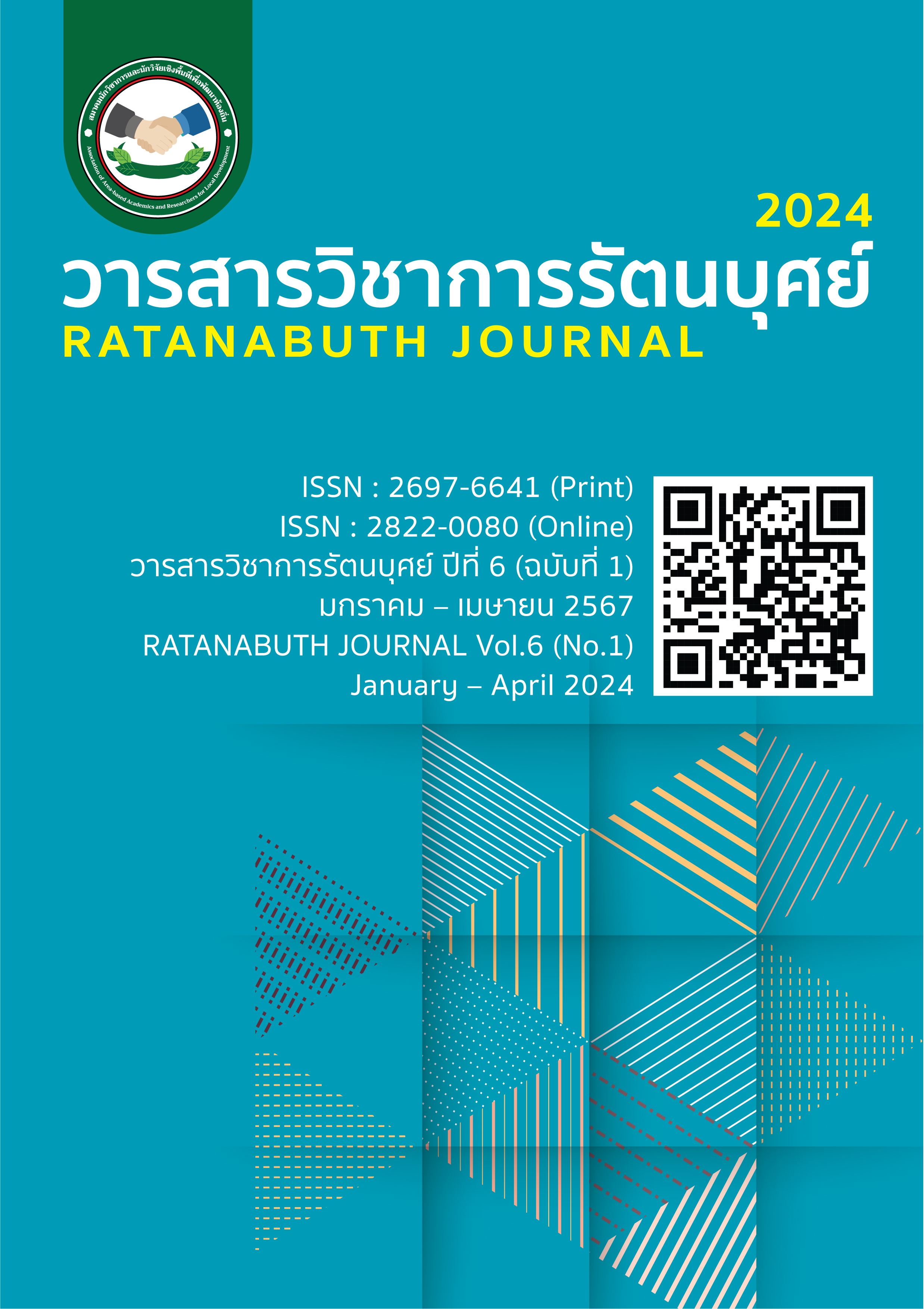Guidelines for Development of Teachers for the 21st Century Learning Management of Schools under Mahasarakham Provincial Administrative Organization Guidelines for Development of Teachers for the 21st Century Learning Management of Schools under Mahasarakham Provincial Administrative Organization
Main Article Content
Abstract
The objectives of this research were to: Study the current conditions, desirable condition, need assessment and guidelines for development of teachers for the 21st century learning management of schools under Mahasarakham provincial administrative organization. The research was divided into four phases as follow; phase 1; study the current conditions, desirable condition and need assessment of developing teacher in learning management for 21st century. The research sample consists of 39 school administrators and 166 teachers. The research instrument was questionnaire for study the current conditions, desirable condition for development of teachers for the 21st century learning management. phase 2; study the guidelines for development of teachers for the 21st century learning management. The key informants group include 6 school administrators and teachers in school was best practices of learning management and 9 experts for assess suitability possibility of guideline. The research instrument were interview form, Data were analyzed by content analysis and assessment form of guidelines, Data were analyzed by the mean and standard deviation.
The results found that: 1. The current state in overall was high average and the desirable state in overall was in the highest level. The need assessment rank from high to low level was 1) Assessment for learning 2) Child-centered learning 3) Cooperative Learning 4) Technology base Learning. 2. The development guidelines of teacher in learning management for 21st century consist of 19 guidelines as follows: 1) Assessment for learning, 3 guidelines 2) Child-centered learning, 5 guidelines 3) Cooperative Learning, 5 guidelines 4) Technology base Learning, 6 guidelines. The evaluation of guidelines, feasibility and utility was the highest in overall.
Article Details

This work is licensed under a Creative Commons Attribution-NonCommercial-NoDerivatives 4.0 International License.
References
กรมส่งเสริมการปกครองท้องถิ่น. (2563). แผนพัฒนาการศึกษาท้องถิ่น (พ.ศ. 2561-2565). นนทบุรี: กลุ่มงานยุทธศาสตร์การพัฒนาการจัดการศึกษาท้องถิ่น กรมการปกครองส่วนท้องถิ่น.
ฉัตรชัย หวังมีจงมี และองอาจ นัยพัฒน์. (2560). สมรรถนะของครูไทยในศตวรรษที่ 21: ปรับการเรียน เปลี่ยนสมรรถนะ. วารสารสถาบันเสริมการศึกษาและทรัพยากรมนุษย์มหาวิทยาลัยธรรมศาสตร์, 12(2), 47-63.
ทิศนา แขมมณี. (2555). ศาสตร์การสอน. (พิมพ์ครั้งที่ 16). กรุงเทพฯ: โรงพิมพ์แห่งจุฬาลงกรณ์มหาวิทยาลัย.
ทิศนา แขมมณี. (2559). ศาสตร์การสอน: องค์ความรู้เพื่อการจัดกระบวนการเรียนรู้ที่มีประสิทธิภาพ. (พิมพ์ครั้งที่ 20). กรุงเทพฯ : สำนักพิมพ์แห่งจุฬาลงกรณ์มหาวิทยาลัย.
บัญญพนต์ พูลสวัสดิ์. (2561). Digital Education การศึกษาในโลกดิจิทัลกับผู้เรียนในศตวรรษที่ 21. สืบค้นเมือ 21 มกราคม 2565 จาก http://www.digitalagemag.com/digital-Education
บุญชม ศรีสะอาด. (2556). การวิจัยเบื้องต้น. (พิมพ์ครั้งที่ 9). กรุงเทพฯ: สุวีริยาสาส์น.
ฟาฏินา วงศ์เลขา. (2558). การจัดการเรียนการสอนในโลกยุคดิจิทัล. สืบค้นเมื่อ 14 มกราคม 2565 จาก http://www. moe.go.th/moe/th/news/detail.php?NewsID=43633&Key=hotnew
พิมพันธ์ เดชะคุปต์ และพเยาว์ ยินดีสุข. (2558). การจัดการเรียนรู้แนวในศตวรรษที่ 21. (พิมพ์ครั้งที่ 3). กรุงเทพฯ: โรงพิมพ์แห่งจุฬาลงกรณ์มหาวิทยาลัย.
ไพฑูรย์ สินลารัตน์. (2560). การศึกษา 4.0 เป็นยิ่งกว่าการศึกษา. (พิมพ์ครั้งที่ 4). กรุงเทพฯ: โรงพิมพ์แห่งจุฬาลงกรณ์มหาวิทยาลัย
วัชรา เล่าเรียนดี. (2554). รูปแบบและกลยุทธ์การจัดการเรียนรู้ เพื่อพัฒนาทักษะการคิด. นครปฐม: คณะศึกษาศาสตร์ มหาวิทยาลัยศิลปากร.
วิจารณ์ พานิช. (2555). วิถีสร้างการเรียนรู้เพื่อศิษย์ในศตวรรษที่ 21. กรุงเทพฯ: มูลนิธิสดศรี-สฤษดิวงศ์.
ศิริวรรณ ฉัตรมณีรุ่งเจริญ และวรางคณา ทองนพคุณ. (2556). ทักษะแห่งศตวรรษที่ 21 ความท้าทายในอนาคต 21st Century Skills: The Challenges Ahead. คณะครุศาสตร์ มหาวิทยาลัยราชภัฏภูเก็ต.
สำนักงานเลขาธิการสภาการศึกษา. (2557). รายงานการวิจัยแนวทางการพัฒนาการศึกษาไทยกับการเตรียมความพร้อมศตวรรษที่ 21. กรุงเทพฯ : สำนักงานเลขาธิการสภาการศึกษา.
สำนักงานเลขาธิการสภาการศึกษา. (2562). มาตรฐานการศึกษาของชาติพ.ศ. 2561. กรุงเทพฯ: 21 เซ็นจูรี่.
สำนักบริหารงานการมัธยมศึกษาตอนปลาย. (2561). แนวทางการดำเนินงานโรงเรียนมาตรฐานสากล. กรุงเทพฯ: โรงพิมพ์ชุมนุมสหกรณ์การเกษตรแห่งประเทศไทย.
สุวิมล ว่องวาณิช. (2558). การวิจัยประเมินความต้องการจำเป็น. กรุงเทพฯ: สำนักพิมพ์แห่งจุฬาลงกรณ์มหาวิทยาลัย.
International Society for Technology in Education (ISTE). (2007). Preparing Teachers to Use Technology. U.S Department of Education’s Preparing : PBS Teacher Line.
Kay, K. (2018). 21st century skills: Why they matter, what they are, and how we get there. In Bellanca, J., & Brandt, R. (Eds.), 21st century skills: Rethinking how
Krejcie, R. V. & Morgan, D. W. (1970). Determining Sample Size for Research Activities. Educational and Psychological Measurement.


